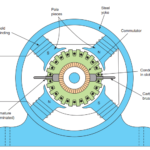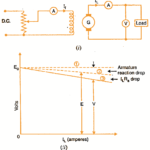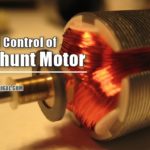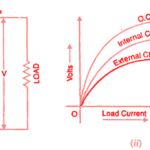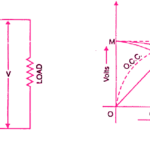Direct Current (DC) shunt generators play a vital role in converting mechanical energy into electrical energy. They are widely used in various applications, including power plants, industrial processes, and renewable energy systems. A crucial aspect of DC shunt generators is their ability to maintain stable output voltage levels under different load conditions. This stability heavily relies on the critical field resistance, an important parameter that impacts the generator’s performance. In this article, we will explore the concept of critical field resistance and its significance in the operation of DC shunt generators.
DC Shunt Generator Basics
Before diving into the critical field resistance, let’s briefly review the fundamentals of a DC shunt generator. A DC shunt generator is essentially a self-excited machine that generates electrical power. It consists of a stator, which houses the field windings, and a rotor that carries the armature windings. When the generator starts rotating, an electromotive force (EMF) is induced in the armature windings due to the relative motion between the magnetic field and the conductors.
The critical components that define the generator’s operation are the field winding and the armature winding. The field winding, connected in parallel (shunt) to the armature winding, allows the generator to maintain a constant magnetic field within the stator.
What is Critical Field Resistance?
The critical field resistance (RC) of a DC shunt generator is a fundamental parameter that determines its ability to self-excite and generate voltage. It represents the maximum field circuit resistance at which the shunt generator can just begin to build up voltage and operate effectively.
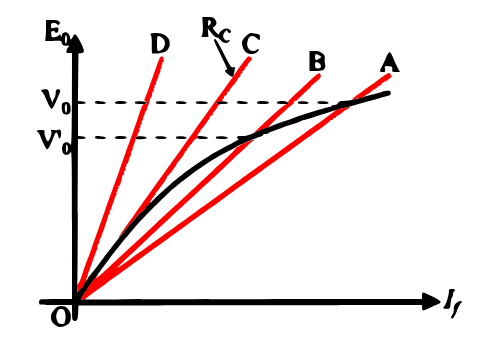
In a shunt generator, the voltage generation process is directly influenced by the field circuit resistance (R1). When the field circuit resistance is set to R1, the generator builds up a specific voltage (V0), as indicated by the E0 versus If curve. If we increase the field circuit resistance to R2, the generator’s voltage build-up decreases slightly, resulting in a value slightly less than V0. As the field circuit resistance is progressively increased, the slope of the field resistance line also increases.
At a specific point, the field resistance line becomes tangent to the magnetization characteristics (represented by line OC) of the generator. At this critical resistance, the generator just manages to self-excite and start generating voltage. However, if we further increase the field circuit resistance beyond this point (line OD), the generator fails to excite and produce any voltage output. Therefore, the field circuit resistance represented by the tangent line OC is termed the critical field resistance (RC) of the shunt generator.
Essentially, a shunt generator can only build up voltage and operate effectively when the field circuit resistance is maintained below the critical field resistance value (RC). Beyond this critical point, the generator loses its self-excitation capability and becomes unable to produce any electrical output.
In conclusion, understanding and controlling the critical field resistance is crucial for ensuring the proper functioning and voltage generation capabilities of a DC shunt generator. By staying within the limits of the critical field resistance, the generator can reliably and efficiently supply electrical power for various applications.
Role of Critical Field Resistance
The critical field resistance (Rf) is a key parameter that determines the stability of the generator’s output voltage. It represents the resistance that needs to be connected in series with the field winding to achieve critical field weakening. Critical field weakening is a phenomenon where the magnetic field strength is deliberately reduced below its rated value. This is typically done by adjusting the field current.
Significance of Critical Field Resistance
- Voltage Regulation: The primary reason for controlling the field current and achieving critical field weakening is to regulate the output voltage of the DC shunt generator. When the generator operates at light loads, a decrease in the field current prevents excessive voltage build-up. Conversely, during heavy loads, increasing the field current helps to maintain the output voltage within acceptable limits.
- Avoiding Saturation: If the generator operates with a fixed field current at all loads, there is a risk of the magnetic circuit saturating. Saturation occurs when the magnetic flux reaches its maximum limit and cannot further increase with an increase in field current. This situation results in a rapid decline in voltage regulation, leading to potential damage to the generator and connected equipment.
- Stability: The critical field resistance plays a significant role in stabilizing the generator’s performance. By ensuring proper voltage regulation and avoiding magnetic saturation, critical field weakening helps prevent voltage fluctuations and instabilities, ensuring a consistent and reliable power supply.
- Efficiency: Operating the DC shunt generator with an optimal field resistance improves its overall efficiency. By adjusting the field current appropriately, the generator can maintain a steady voltage output, reducing unnecessary energy losses and enhancing the system’s efficiency.
Conclusion
The critical field resistance of a DC shunt generator is a crucial parameter that influences its voltage regulation, stability, and efficiency. By achieving critical field weakening through appropriate field resistance adjustment, the generator can effectively handle varying loads without compromising its performance. Proper understanding and control of the critical field resistance are essential for ensuring the smooth and reliable operation of DC shunt generators in a wide range of applications. As technology advances, further research and developments in generator control mechanisms will continue to enhance the efficiency and sustainability of electrical power generation.
